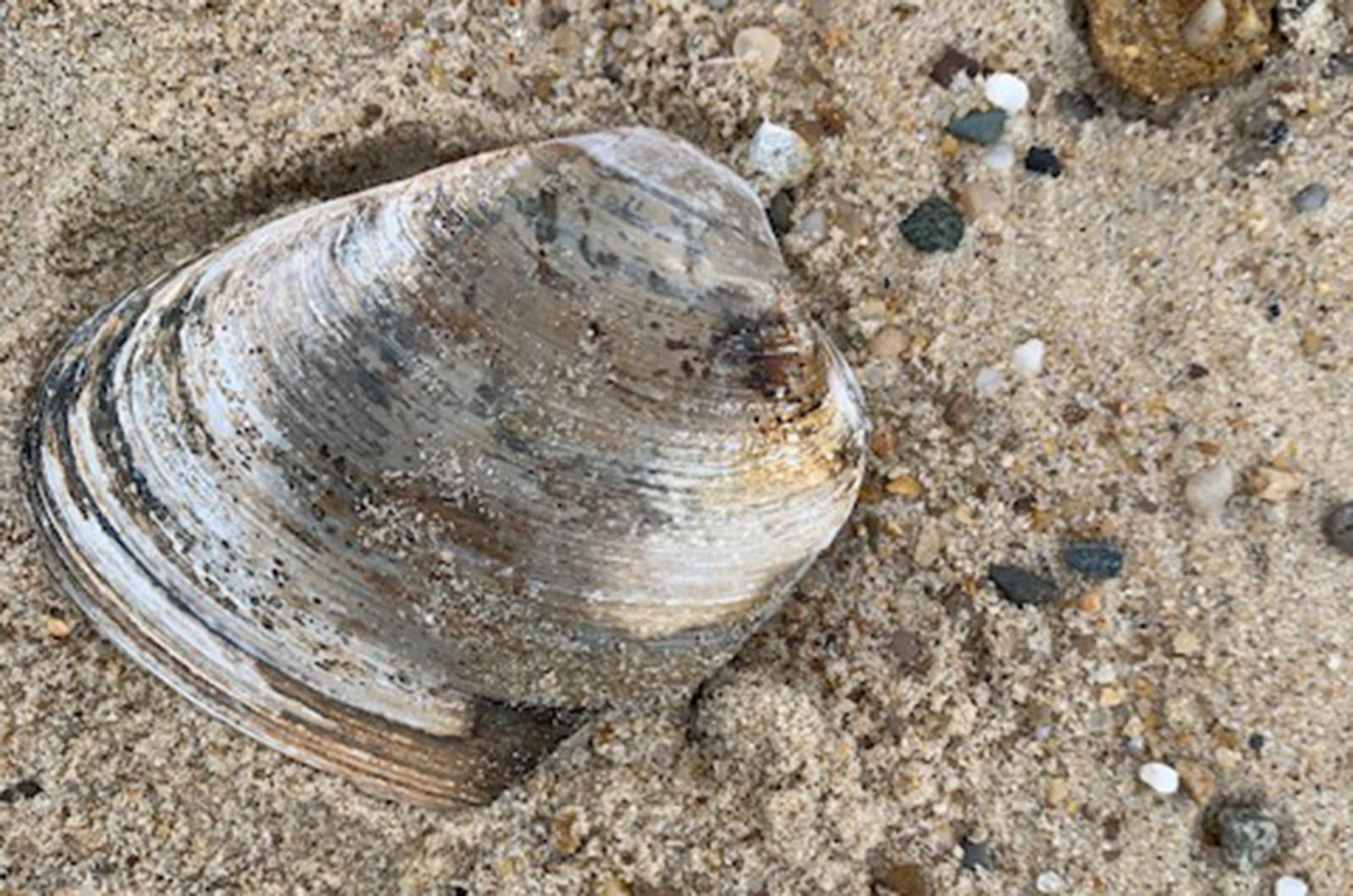French philosopher Jean-Paul Sartre knew that “it is not a matter of indifference whether we like oysters or clams, snails or shrimp, if only we know how to unravel the existential significance of these foods.”
He could not be more right about the meaning and importance of a great bivalve. Atlantic surf clams, spisula solidissima, are immense in size, history and deliciousness.
Also known as bar, hen, sea and skimmer clams, these mighty mollusks can grow to almost nine inches across. These are those very big clams whose empty shells you find on the beach and have been employed as soap dishes, ashtrays and trinket holders. Their value goes way beyond utilization as vessels.
Surf clams play a few roles in their maritime environment as filter feeders and as nourishment for other marine life — including seals, fish, crabs, sea stars and others — as part of the oceanic food chain. And they don’t just keep their heads and bodies in the sand: they have a place in regional culinary history.
While human consumption of these clams likely goes back to Indigenous people, their commercial harvest and nationwide consumption began more recently. It was Lawrence (Chubby) and Bessie Woodman of Woodman’s of Essex, just north of Boston, who originated the fried clam. Chubby is said to have used soft-shelled clams — the siblings of surf clams — to create the first batch of fried clams on July 3, 1916.
Down the road from Essex, the Soffron brothers from Ipswich were credited with introducing the surf clam — which they called “tendersweet clams” — into fried-food history. As the supply of smaller soft-shelled clams declined, the brothers harvested the larger surf clams and sliced them to make the clam strips that became famous at Howard Johnson restaurants across the country.
The two clam families’ skills came together since Howard Johnson restaurant staff learned how to make the fried clams from the Woodmans but contracted with the Soffron brothers to catch and harvest their exclusive supply of surf clam strips. The latter partnership ended in 1966, but Americans’ love of fried clams has never waned.
Today surf clams are prevalent from the fish market to the supermarket. They are sold fresh, canned, as strips, in chowder and fritters and even as sushi when called hokkigai, for “giant clam.” Commercial harvests come mainly from the East Coast, specifically the waters of New Jersey, the Delmarva Peninsula and Georges Bank.
Surf clams are considered a sustainable seafood, with 70 per cent caught in the U.S. These clams are harvested using a hydraulic dredge that allows for very little bycatch. In 2022, 41 million pounds, worth more than $40 million dollars, were taken.
The Woodmans and Soffrons were visionary clam cuisine creators. More recently, they are being followed by aquaculturists developing new products from the reliable old surf clam. The New England butter clam will hopefully soon make its debut at restaurants and from fishmongers near you. The butter clams are juvenile surf clams that are grown and harvested at about an inch, at the young age of half a year to one-year-old, very early in their potential up-to-35-year lifespan.
Whether one is eating young, small butter clams or the elder, larger surf clams, any consumption will make bivalve-loving folks as happy as a clam — though not the one going down your gut. But for many of us, that feasting starts and is so hard to stop that we begin to resemble the woman described in the quip by Louis Kronenberger as “she ate so many clams that her stomach rose and fell with the tide.”
Suzan Bellincampi is Islands director for Felix Neck Wildlife Sanctuary in Edgartown and the Nantucket Wildlife Sanctuaries. She is also the author of Martha’s Vineyard: A Field Guide to Island Nature and The Nature of Martha’s Vineyard.




Comments
Comment policy »